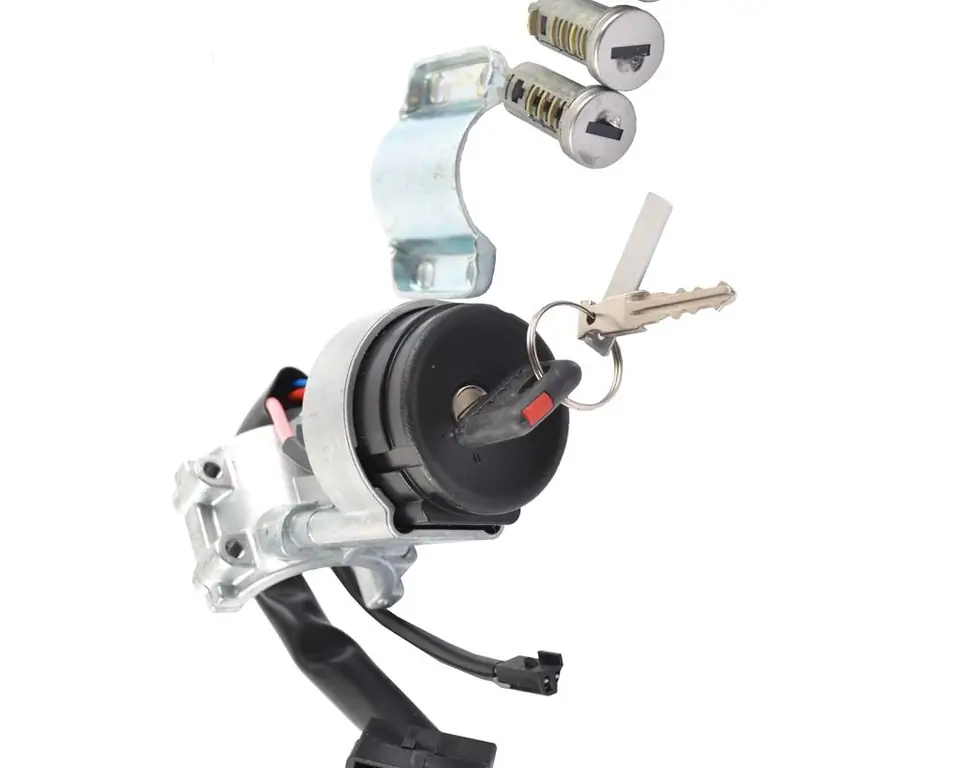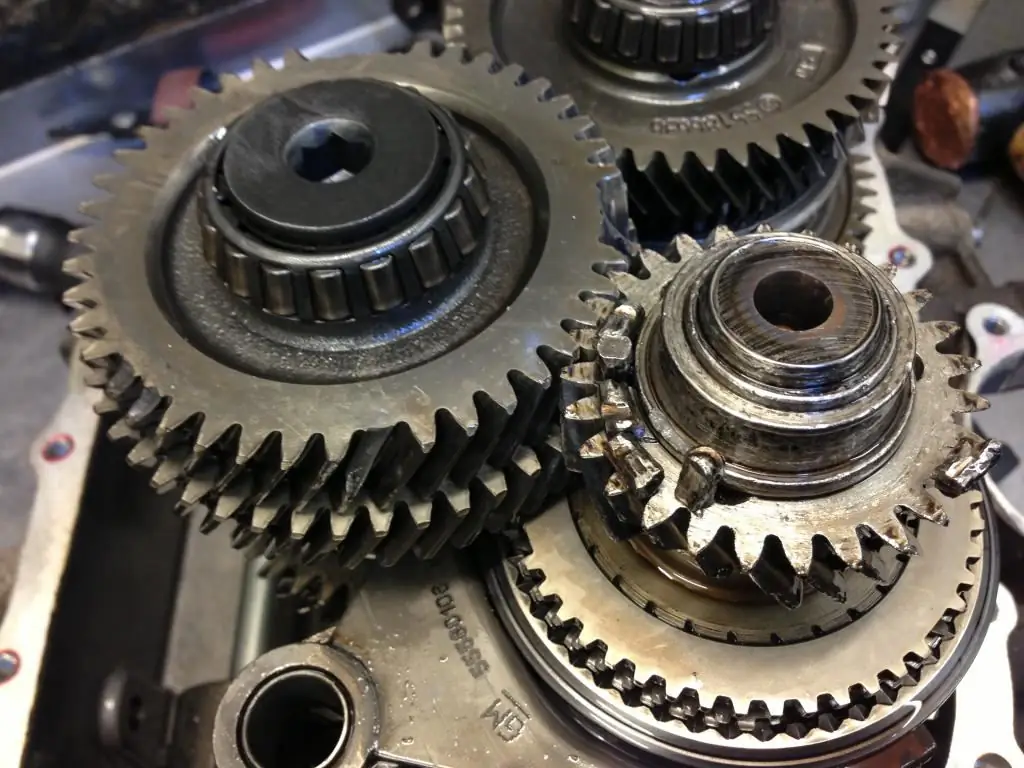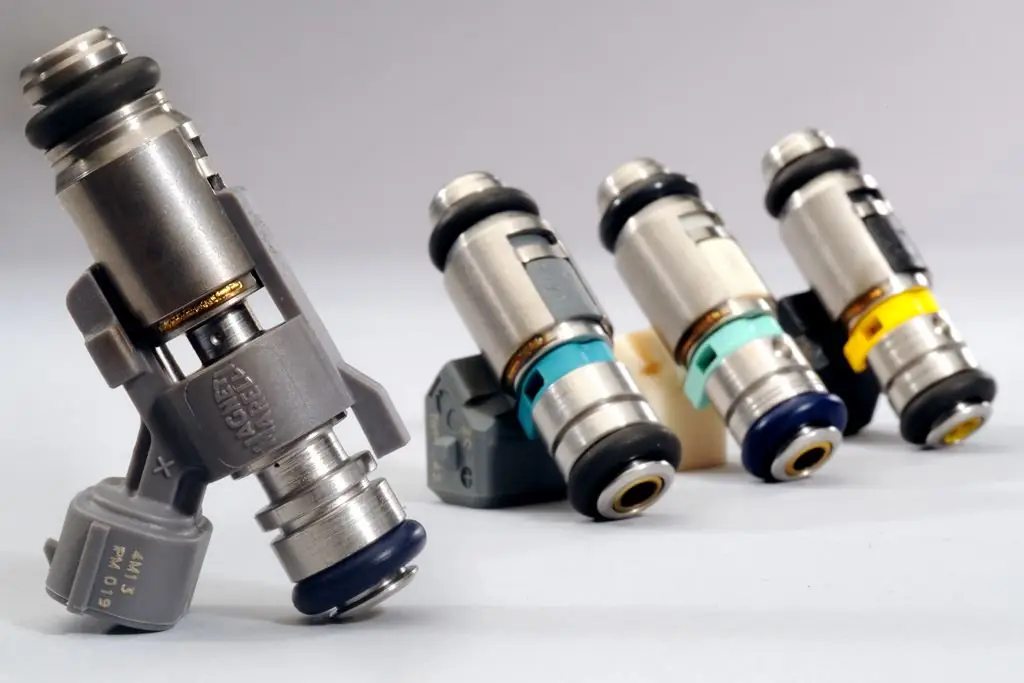2025 Author: Erin Ralphs | [email protected]. Last modified: 2025-01-22 21:14:09
Beginner drivers sometimes think that the most important quality that motorcycle engines have is the amount of horsepower, and they think that a vehicle will only run well if it has more than a hundred horsepower. However, in addition to this indicator, there are many characteristics that affect the quality of the motor.
Types of motorcycle engines
There are two-stroke and four-stroke motors, the principle of operation of which is somewhat different.
Motorcycles also have different numbers of cylinders.
In addition to the native carburetor engine, you can often find injection units. And if motorcyclists are used to fixing the first type on their own, then fixing an injection engine with a direct injection system with their own hands is already problematic. Diesel motorcycles have been produced for a long time and even with an electric motor. The article will consider the characteristics of a carburetor-type motorcycle engine.
How an engine works
In the engine cylinders, the thermal energy of the burning fuel is converted into mechanical work. AtIn this case, the piston moving due to gas pressure causes the crankshaft to rotate through the crank mechanism. This mechanism consists of a crankshaft, a connecting rod, a piston with rings, a piston pin, a cylinder.
Differences in design lead to different operation of a two- and four-stroke engine.
Four-stroke engine
Such motors have a duty cycle of four strokes of the piston and two revolutions of the crankshaft. The engine diagram clearly shows the structure of a piston internal combustion engine and its workflow.

- During intake, the piston descends from top dead center, drawing the mixture through the open valve.
- During compression, the piston rising from bottom dead center compresses the mixture.
- During the working stroke, the mixture, ignited by an electric candle, burns out, and the gases move the piston down.
-
When releasing the piston, rising, pushes the already exhausted gases through the open exhaust valve. When it reaches top dead center again, the exhaust valve closes and the whole thing starts again.
The advantages of four strokes are:
- reliability;
- economy;
- less harmful exhaust;
- a little noise;
- oil is not pre-mixed with gasoline.
A design of this kind can be displayed by the following engine diagram.

Two-stroke engine
Engine sizethis type of motorcycle is usually smaller, and the duty cycle takes one revolution. In addition, it does not have intake and exhaust valves. This work is reproduced by the piston itself, which opens and closes the channels and windows on the cylindrical mirror. The crankcase is also used for gas exchange.
The advantages of this engine are:
- with the same cylinder volume, it has a power that exceeds the four-stroke by 1.5-1.8 times;
- does not have a camshaft and valve system;
- Production is cheaper.
Cylinders and their workflow
The working process of one and the other engine takes place in the cylinder.
The piston here moves along a cylindrical mirror or an insert sleeve. If air-cooled, then cylindrical jackets have ribs, and when water-cooled, they have internal cavities.
The crankshaft receives the movement of the piston through the connecting rod, transforming it into a rotary one, and then transmitting the torque to the transmission. Also, a gas distribution mechanism, a pump, a generator and balancing shafts begin to work from it. The crankshaft has one or more cranks depending on the number of cylinders.
In a four-stroke engine, in order to better fill the cylinder with a mixture, the intake begins even before the piston reaches top dead center, and ends after it passes bottom dead center.
Cleaning it begins even before reaching the bottom dead center, and the exhaust gases are pushed out when the piston moves to the top dead centerpoint. The exhaust valve then closes to allow the gases to escape the cylinder.
The following types of gas distribution mechanism are used on this type of motor:
- OHV;
- OHC;
- DOHC.
The latter type has a minimum number of elements, so that the crankshaft can rotate faster. Therefore, DOHC is becoming more widespread.
Four-stroke engines have a more complex design than two-stroke ones, as they have a lubrication system and a gas distribution mechanism that is absent in two-stroke engines. However, they have become widespread due to their cost-effectiveness and less harmful environmental impact.

Motorcycle engines are most often one-, two- and four-cylinder. But there are units with three, six and ten cylinders. Cylinders in this case are in-line - longitudinal or transverse, horizontal opposed, V-shaped and L-shaped. The working volume of engines usually have no more than one and a half thousand cubic meters of these motorcycles. Engine power - from one hundred and fifty to one hundred and eighty horsepower.

Engine oil
Lubrication is necessary so that excessive friction does not occur between the parts of the motor. It is implemented using motor oils that have a stable structure from exposure to high temperatures and low viscosity at low rates. In addition, they do not form deposits, are not aggressive to plasticand rubber parts.
Oils are mineral, semi-synthetic and synthetic. Semi-synthetics and synthetics are more expensive, but these types are preferred more, as they are believed to be better for the engine. Different types of oils are used for two-stroke and four-stroke engines. They also differ in the degree of forcing.

Wet and dry sump
Four-stroke engines use three ways to supply oil:
- gravity;
- splashing;
- supply under pressure.
Moreover, most of the rubbing pairs are lubricated under pressure from the oil pump. But there are also those that are lubricated by oil mist, which is formed as a result of splashing of the crank mechanism, as well as parts to which oil flows through channels and gutters. In this case, the oil pan serves as a reservoir. It is called "wet" in this case.
Other motorcycles have a dry sump system, where one section of the oil is pumped into the tank, and the other is pressurized to the points of friction.
In dutaktniks, lubrication occurs with oil, which is found in fuel vapors. It is pre-mixed with gasoline, or it is supplied by a metering pump in the inlet pipe. This last type was called the "separate lubrication system". It is especially common on foreign motors. In Russia, the system is included in the engine of the Izh Planet 5 and ZiD 200 Courier motorcycles.
Cooling system
When the fuel in the engine burns, it is releasedheat, of which almost thirty-five percent goes to useful work, and the rest is dissipated. At the same time, if the process is inefficient, the parts in the cylinder overheat, which can lead to their jamming and damage. To prevent this from happening, a cooling system is used, which can be air or liquid, depending on the type of motor.
Air cooling system
In this system, the parts are cooled by oncoming air. Sometimes, for better work of the surface of the cylinder, its heads are made ribbed. Forced cooling is sometimes used with a mechanical or electrically driven fan. In four-stroke engines, the oil is also thoroughly cooled, for which the surface of the crankcase is increased and special radiators are installed.
Liquid cooling system
The option is similar to what is installed on cars. The coolant here is antifreeze, which is low-freezing (from minus forty to minus sixty degrees Celsius) and high-boiling (from one hundred twenty to one hundred and thirty degrees Celsius). In addition, antifreeze achieves an anti-corrosion and lubricating effect. Pure water cannot be used as such.
Overheating of the cooling system can be caused by overload or contamination of the heat dissipating surfaces. Also, individual elements may break in it, due to which the liquid will leak out. Therefore, the operation of the cooling must be constantly monitored.
Power system
As a fuel for carbureted motorcycles, gasoline is used, the octane number of which is not lower than93.
Motorcycle engines have a power system that includes a fuel tank, valve, filter, air filter and carburetor. Gasoline is in a tank, which in most cases is mounted above the engine in order to flow by gravity into the carburetor. In other cases, it can be supplied using a special pump or vacuum drive. The latter can be found on two-strokes.

The fuel tank has a cap with a special hole where air enters. In many foreign motorcycles, however, air enters through coal tanks. And some have a lock on the lid.
Fuel cock prevents fuel leakage.
Air enters the carburetor through the air filter. There are three types of filter.
- In the compact oil type, the air enters the center, rotates 180 degrees and passes into the filter. At the same time, it is cleaned when the flow is turned, where heavy particles settle in the oil. The engine of the motorcycle "Ural" and "Izh" is equipped with such a filter. However, other types are used abroad, paper and foam.
- Paper filters are disposable. They must be changed at every maintenance.
- Foam filters are reusable - they can be washed and re-impregnated with oil.
Sport bikes with engines of 250cc and above today have a so-called "direct intake" system, when air is taken in front of the fairing, due to which fillingcylinders at high speeds increases.
Carburetor and its types
This device prepares and doses the air-fuel mixture, which then goes into the cylinder. There are three types of modern carburetors:
- spool;
- constant vacuum;
- registered.
All domestic engines, as well as the Ural motorcycle engine, have spool carburetors. The only exception is the Ural-Vostok, which has a constant vacuum carburetor.
In a spool carburetor, the throttle stick is connected to the spool. Through the impact on it, the air entering the motor is regulated. A conical needle is connected to the spool, which enters the atomizer. When it changes, the mixture is enriched or depleted. A fuel jet is installed on the sprayer. And together all the elements make up the dosing system.
In constant vacuum carburetors, the movement of the throttle stick is transferred to the throttle valve, which is closer to the outlet of the carburetor. The air in the chamber above the spool interacts with the mixing carburetor chamber. So it turns out that the movement of the spool is regulated by the vacuum in the intake tract.
Register carburetors, which are equipped with many foreign single-cylinder four-stroke engines, such as Honda engines, combine the two previous types. It has two mixing chambers, where in one the spool is driven from the handle, and in the other - from the vacuum in the mixing chamber.
Launch

In order to start a cold engine, you need a rich mixture. In the chamber of some carburetors, there is a float drowner for this. When its rod is pressed, the fuel level in the chamber rises sharply to a level above the permissible level. Because of this, fuel begins to flow into the intake manifold. Some of the fuel leaks out. For some time now, however, carburetor designs have been made in such a way that vapors do not get out. Such designs involve the use of an enrichment mixture, which is an air damper or another fuel channel. It is used instead of a drowner.
Recently, four-stroke motorcycle engines often have an electrically controlled fuel injection system. It consists of an electric fuel pump, a battery, electromagnetic injectors, an electronic control unit that is connected to various sensors, a distribution pipeline.
There are also motor control systems, where the adjustment of the power and ignition systems are combined, which increases the efficiency and at the same time the power of the unit.
The main fuel system failure that may require motorcycle engine repair is a reduction or even a cut in the fuel supply due to blockage. To avoid this, use a fuel filter. In addition, it is necessary to monitor the condition of the air filter and the tightness of the nozzles.
Exhaust system
The exhaust system consists of a cylindrical exhaust port, pipe and muffler. In two-stroke engines, the size and shape of the system partsdirectly related to efficiency and power. Therefore, they use exhaust systems on each cylinder separately. They have a resonator, a pipe and a muffler.
In four-stroke engines, the valves of the gas distribution system control the exhaust, so resonance does not play a special role in them. In them, usually all pipes are reduced to a single muffler.
On some motorcycles, the exhausts are equipped with catalytic converters that reduce the toxicity of emissions (they are installed, for example, on engines from Honda and other Japanese manufacturers). Such devices were developed as a result of the tightening requirements for exhaust gases in the EU, the USA and Japan. In order to prevent the mixture from blowing back from the cylinders at idle and low rotation of the crankshaft, special power valves are provided in the exhaust systems of many motorcycles.
Recommended:
The principle of operation of the variator. Variator: device and principle of operation

The beginning of the creation of variable programs was laid in the last century. Even then, a Dutch engineer mounted it on a vehicle. After such mechanisms were used on industrial machines
"Lada-Kalina": ignition switch. Device, principle of operation, installation rules, ignition system, advantages, disadvantages and features of operation

Detailed story about the ignition switch Lada Kalina. General information and some technical characteristics are given. The device of the lock and the most frequent malfunctions are considered. The procedure for replacing with your own hands is described
Planetary gearbox: device, principle of operation, operation and repair

Planetary gears are among the most complex gear boxes. With a small size, the design is characterized by high functionality, which explains its widespread use in technological machines, bicycles and caterpillar vehicles. To date, the planetary gearbox has several design versions, but the basic principles of operation of its modifications remain the same
Carburetor and injector: difference, similarities, advantages and disadvantages of carburetor and injection engines, principle of operation and expert reviews

For more than a hundred years, the car has firmly established itself in our lives. During this time, managed to become a familiar, everyday means of transportation. Let's see what the difference is between a carburetor and an injector, what advantages and disadvantages they have
Gas generator engines: principle of operation, specifications, fuel

Gas generator engines have one indisputable plus - renewable fuel that does not undergo pre-treatment. The history of the use of machines with such equipment is quite long. Now they are not as popular as they used to be, but little by little they are still returning to service

